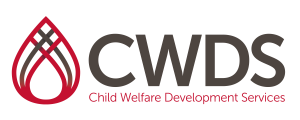CWDS Curriculum
Child and Family Teams and Facilitating a CFT Meeting – San Bernardino
Level: Advanced Practice – Lineworker, Supervisor, Manager
Credits: 12.0
Intended Audience: This is an experiential training for facilitators of all meetings. This curriculum is designed to be used in conjunction with other facilitative approaches participants bring to the table. It should be offered as a model that can be used in full, or more likely in pieces as participants see fit in the course of their internal agency work and their direct work with children and families.
Description of Course: The purpose of Child and Family Team Meetings of any type is to build agreements between the Department, families, providers and other essential team members. It is largely the responsibility of meeting facilitators to bring a very disparate group of people into Child and Family Teams and build critical agreements and decisions. In this two day facilitation training, you will learn the strategies and skills for helping groups solve problems, resolve conflict, and build agreement. This workshop will provide you with a solid foundation of theory and facilitation practice skills for immediate use.
Intended Objectives:
- Understand the three dimensions of facilitated practice: task/outcomes, process, and relationships.
- Increase skills on building shared understanding and shared agreements with groups.
- Broaden knowledge of communication across differences and learn guidelines to support conversations where communication breakdown is likely to occur.
- Offer preventions and interventions to mitigate and intervene when there are unwanted meeting behaviors.
- Create a plan to ‘try on’ the facilitation practices both as meeting participants and facilitators in their work.
- Demonstrate basic facilitation skills (i.e. helping the group stay focused on key issues, insuring participation by all individuals present, reach shared agreements, etc.)
- Demonstrate balanced attention to relationship, process and outcomes within facilitation using the Dialogue Structure.
- Demonstrate respectful engagement of participants in CFTMs through challenging conversations (such as conversations in which families and the department disagree about danger/risk; conversations in which power differential of participants seems to be inhibiting the process; etc).
- Actively encourage and support parent participation.
Facilitate exploration of worries, what’s working well, and what needs to happen next. - Through inquiry, help the group differentiate danger from complicating factors, and safety from supporting strengths.
- Help the group develop a clear danger/risk statement, safety statement, safety goal, and plan for next steps.
- Facilitate exploration of safety networks by using safety circles. Collaboratively plan with the family and their network members.
Topics Include:
- Overview of Katie A Core Practice Model
- Overview of Child and Family Teams
- Group Agreements
- Multicultural Guidelines and CFTMs
- Key Meeting Functions
- Strategies to Address Top Three Meeting Challenges
- Safety Agreements
- Facilitated Dialogue Structure
- Helpful Types of Questions to Ask when Facilitating a CFTM
- Danger and Safety Statements leading to a Safety Goal
- Safety Circles
- Safety Plan
Teaming Strategies



